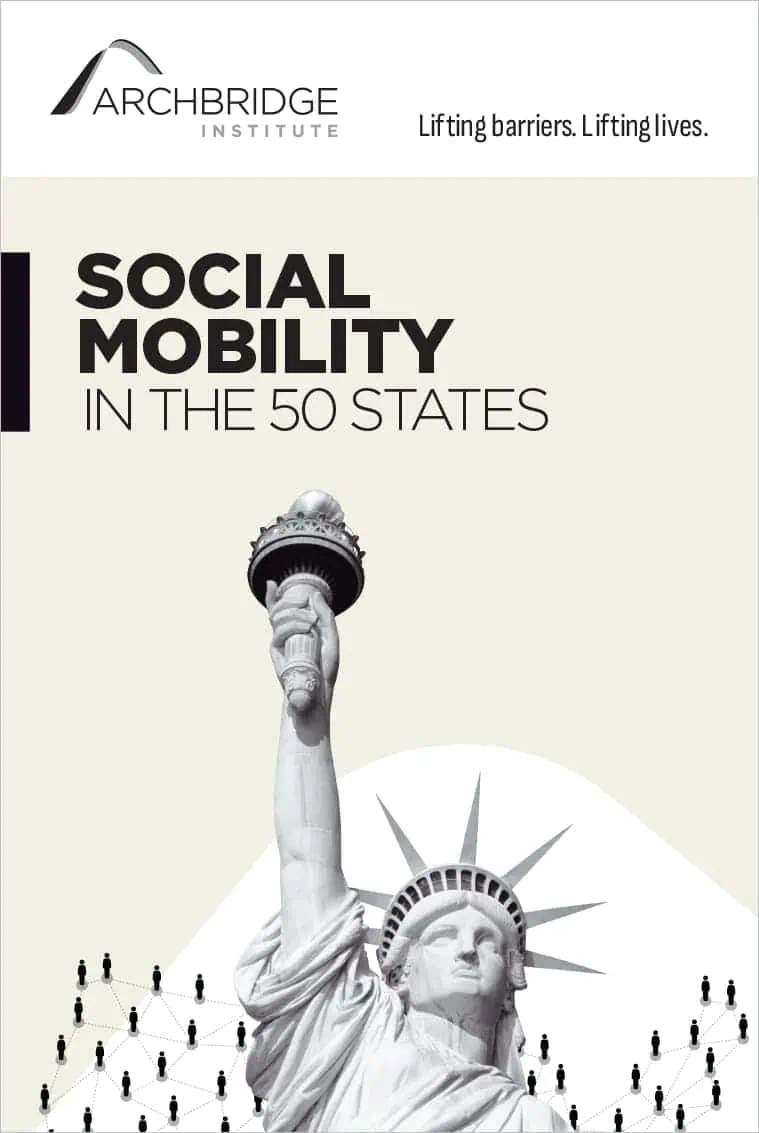
This report was published in partnership with the Wisconsin Institute for Law & Liberty.
Introduction
Access to affordable, quality childcare remains an ongoing policy challenge in the US. The same is true for Wisconsin. According to Child Care Aware of America, the average monthly price for full-time childcare for one child is $915 per month in Wisconsin. For families with children under the age of 6, this is 17% of the median household income. By comparison, families in Iowa, Illinois, and Indiana are paying 3-7% less of their income on childcare.
If families are not able to access childcare, it can affect labor force participation. Nearly 80% of women and almost 25% of men that leave the workforce do so to provide home and family care. Families dropping out of the labor force to provide childcare is an important contributing factor to Wisconsin’s skilled worker shortage. The US Department of Commerce classifies the skilled worker shortage in Wisconsin as “more severe” with only 54 workers available to potentially fill each 100 job openings in the state.
Policymakers in Wisconsin have been attempting to address the challenges Wisconsin families are facing in accessing childcare. In 2023, a package of bills was introduced aimed at increasing supply and lowering costs of childcare through a variety of regulatory reforms, some of which have been reintroduced in 2025.
- AB 389 would have created a new licensing category for family childcare centers to care for an additional four children, with more adult supervisors, without being regulated as a group childcare center.
- AB 391 would have allowed childcare centers to lower their staff-to-child ratios to match the ratio required for the school district they reside in, if it is lower.
- Currently, certified childcare operators can care for only three children who are unrelated to them but six children in total. AB 392 would make it so certified childcare operators can care for six children total regardless of whether the children are related to them.
Two other bills in this package also aimed to address affordability and industry burnout. AB 387 would have allowed families to contribute up to $10,000 to a tax-advantaged account to pay for childcare expenses, and AB 390 would have lowered the minimum age for assistant teachers from 17 to 16, and removed restrictions on when they can provide sole-supervision for a group of children. These bills passed the State Assembly but did not receive a vote in the Senate.
While these proposals sought to improve access and reduce costs through regulatory and market-based reforms, much of the policy debate has focused on raising subsidies for childcare providers. However, it is important to note that childcare providers already receive significant state and federal funding. In grant year 2024, Wisconsin received more than $487 million from two federal block grants that can be used to support childcare and related services. The federal Child Care and Development Fund is the primary source of money for childcare quality and subsidies in Wisconsin, and the Temporary Assistance for Needy Families program which mainly funds employment programs but also noncustodial parent services family emergency assistance. In October of 2023, Governor Evers also applied $170 million in emergency funding to further subsidize childcare providers through the Childcare Counts Stabilization Payment Program. Of those who opposed the previously mentioned bills, many advocated for making this a permanent program and increasing its funding.
In this report, we will present evidence to illustrate that additional subsidies are not the right remedy for addressing the root cause of the problem. Childcare is one of the most highly regulated industries in the United States. Smart regulation that limits accidents and holds childcare centers responsible for fraud and negligence is important. But it is also equally important that regulations do not impose unnecessary burdens on childcare centers. Overly stringent regulation raises the cost of operating a childcare center, limiting entry into the market and likely resulting in higher prices for services.
We will begin by summarizing the academic literature on childcare regulation. We will then share how Wisconsin fares on the Knee Center’s first national Childcare Regulation Index ranking. After providing more details on childcare regulations in Wisconsin, we analyze the implications for the state and offer some recommendations for future reform.





